Clancy Tucker's Blog, page 7
August 21, 2022
19 November 2022 - CONTROVERSIAL MURALS IN MEXICO

CONTROVERSIAL
MURALS
IN MEXICO
G'day folks,
This artwork detailing the city's history features a few controversial characters.
When the government of Aguascalientes commissioned a series of murals from Chilean artist Osvaldo Barra Cunningham, it never imagined the final results would become the most controversial artwork in the state.
“Aguascalientes in History” and “La Feria de San Marcos” are two of the most contentious works. This is because both these paintings featured Consuelo Elía, one of the city’s most well-known prostitutes at the time. In one of them, she’s shown in the center of a press dinner. In the other, she sits inside a restaurant called Doña Petra during the city’s most boisterous annual party.
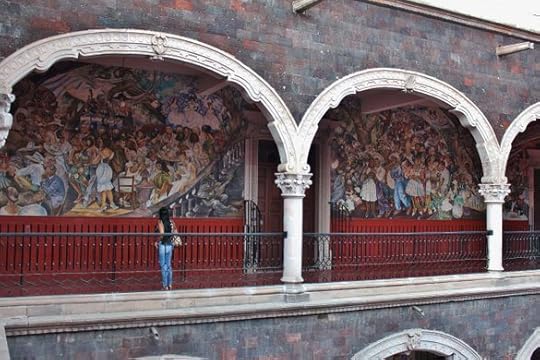
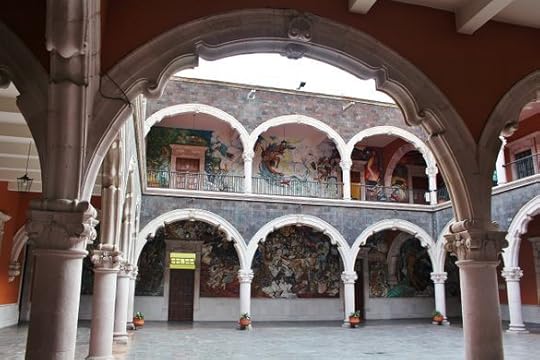


Doña Petra is still located next to the Garden of San Marcos. In the 1960s, it was known for being a favorite haunt among the aristocratic, and also for its waiters, who were largely homosexual. You can see both of these details reflected in the mural.
But the most controversial painting is perhaps the one featuring a naked young man rising to the heavens, as people were aghast by the depiction of a penis on a public mural. A group of religious conservatives once entered the government building in an attempt to cover the scandalous nudity, but Barra Cunningham was able to persuade a bishop to calm their tempers. Barra Cunningham returned to Aguascalientes in 1992, when he was commissioned once again to paint inside the palace.


August 19, 2022
18 November 2022 - THE HARDY TREE - LONDON

THE HARDY TREE
- LONDON -
G'day folks,
This churchyard arbor is surrounded by hundreds of gravestones placed there by author Thomas Hardy.Inside an ancient London churchyard, an ash tree is encircled with hundreds of overlapping gravestones placed there by classic novelist Thomas Hardy.
The cemetery alongside London’s St. Pancras Old Church, which is considered by many to be one of England’s oldest places of Christian worship, is the site of a number of fascinating stories—for one, Mary Shelley and Percy Bysshe Shelley planned their elopement there while visiting Mary’s mother’s grave. But perhaps one of its most striking oddities is the Hardy Tree, an ash tree surrounded by hundreds of weathered gravestones, layered practically on top of one another. How did they come to be arranged in this way?


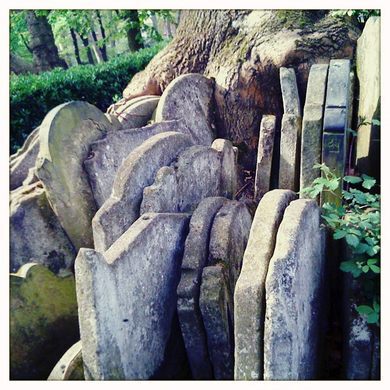

In the mid-1860s, Britain’s rail system was experiencing immense growth, and London was outgrowing its existing lines. In order to accommodate the growing population of commuters, an expansion was planned—directly affecting the graveyard at St. Pancras.
In order to make way for the new train line, an architecture firm was contracted to perform the sensitive task of exhuming the remains and reburying them at another site. In the tradition of dumping rather unpleasant work on those lowest on the totem pole, the job was promptly assigned to their young employee, Thomas Hardy, who in the following decades would publish many classic novels such as Far from the Madding Crowd and Tess of the D’Urbervilles.
After the essential duty was completed, there remained hundreds of headstones, along with the question of what to do with them. Hardy’s solution was to place them in a circular pattern around an ash tree in the churchyard in a spot that would not be disturbed by the railway. One can only speculate as to how he arrived at this decision, but over the years the tree has absorbed many of the headstones, life and death melding into one image of grotesque and gothic beauty, preserved for centuries.

7 November 2022 - THE CHAPEL OAK - FRANCE

THE CHAPEL OAK
- FRANCE -
G'day folks,
Two small chapels are housed inside this ancient tree.Like something out of a fairy tale (or Keebler elves commercial) this ancient oak tree’s hollowed out trunk is is home to two small chapels, reached by a spiral staircase surrounding the trunk. This, the oldest known tree in France, has lived through Louis XIV, the French Revolution, Napoleon, Sarkozy, and amazingly, is still standing.
Located in the small French farming village of Allouville-Bellefosse, France, according to local lore, the tree has grown in pace with the development of the French country itself. Said to have begun growing 1000 years ago (which would make it one of the oldest trees in the world) during the reign of Charlemagne, and in 1035, William the Conqueror is supposed to have knelt at its base. While scientists say the tree is only around 800 years old – too young to have been around in the age of Charlemagne – it is nonetheless, by far, the oldest known tree in France.




In the 1600s, disaster struck. The then middle aged (roughly 470-year-old) oak tree, was struck by lightning, burning right through its center and hollowing out the trunk. However, not only did the tree survive this fate, but the newly hollowed tree came to the attention of the local Abbot Du Détroit and father Du Cerceau. Deciding they wanted to build a different kind of sanctuary they began building a shrine to the Virgin Mary directly into the hollow of the tree. Later another small chapel and a stair case climbing the outside of the tree was added.
Things almost took a very bad turn for the tree during the French revolution. A crowd inspired by the revolution came to burn the tree as it was a symbol of the old way and the abhorred church. A quick thinking local quickly renamed the oak the “temple of reason” sparing it a fiery fate.
Today the common oak is showing signs of age and stress. Now held up by poles, part of the 33-foot trunk has died and the majority of the tree has been covered over with wooden shingles where the bark has fallen away. Although Chene Chappelle’s host tree has begun to wane, its congregation still gathers twice a year for Mass and the tree is still the destination of annual pilgrimage on August 15, the Feast of the Assumption of the Virgin.
August 18, 2022
17 November 2022 - PULPIT ROCK TOWER
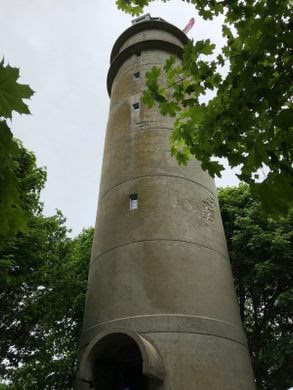
PULPIT ROCK TOWER
G'day folks,
Welcome to the only one of New Hampshire's original 14 World War II watchtowers to survive in near-original condition.
In 1943, in the midst of World War II, the U.S. government built 14 concrete observation towers along the New Hampshire seacoast to defend the Portsmouth Harbor and the busy military industry facility at the Portsmouth Naval Shipyard. Pulpit Rock Tower stands alone as the only one of these wartime watchtowers that to exist in near-original condition today.
The eight-story tower rises 73 feet tall above the shore, with an observation platform on the top level. Soldiers stationed at the base end station would wait in watch for enemy ships. They would triangulate the ship’s coordinates with the other watchtowers and report the position to the gun batteries at Fort Dearborn to properly aim the heavy guns.
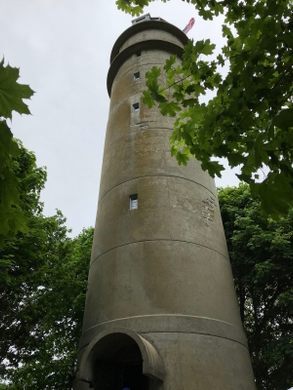

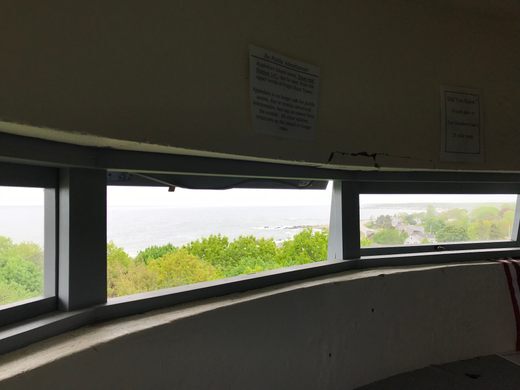
The tower has 12-inch-thick reinforced concrete walls and a concrete spiral staircase inside. While in use, it had electric lighting and a dedicated telephone line to Fort Dearborn (now Odiorne Point State Park). Today, it is one of those inconspicuous landmarks that locals drive past everyday and wonder what it may have been used for. It was also recently named one of the “Seven to Save” endangered historic properties in the state of New Hampshire.
6 November 2022 - THE HEROINE OF DUNKIRK

THE HEROINE
OF DUNKIRK
G'day folks,
The "Heroine of Dunkirk" rescued over 7,000 Allied troops during the historic World War II evacuation.In May of 1940, hundreds of thousands of Allied troops found themselves stranded on the beaches of Dunkirk, France. The German forces had cut them off and surrounded them, leaving them trapped between their encroaching enemies and the sea. All hope seemed lost, until a fleet of over 800 civilian boats and ships were mobilized in a miraculous rescue effort to evacuate the stranded soldiers.
The civilian fleet was able to rescue around 338,000 trapped Allied soldiers from the hands of the advancing German forces. Over 7,000 were transported across the channel by a single vessel, the PS Medway Queen paddle steamer. The ship’s role in the historic rescue earned it the well-deserved nickname of the “Heroine of Dunkirk.” Its service was so well respected that when the person contracted to scrap the ship found out its history, he refused to finish the job.

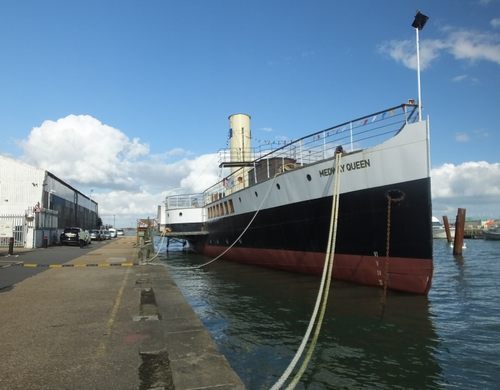


One of 20 paddle steamers that participated in the evacuation, the Medway Queen made seven trips, more than any other small vessel. On its last trip, while alongside the dock in Dunkirk, one of the ship’s paddle boxes was badly damaged in a collision with a destroyer that had been displaced by the force of an explosion. Medway Queen limped home carrying 400 members of the French rearguard.
The ship wasn’t destined to be a wartime vessel. It was built in 1924 in Troon, Scotland, for use as a ferry. It served on the Medway and the Thames Estuary before being requisitioned in World War II as a minesweeper. However, it was the ship’s role in the Dunkirk evacuation that earned it a place in British maritime history.
After the war, the ship returned to civilian use until 1963, when it was due to be scrapped in Belgium. However, when the ship breaker heard that Medway Queen had taken part at Dunkirk, he refused to continue with the job. The ship was sold and used as a floating restaurant and nightclub on the Isle of Wight until it was replaced by a bigger vessel in 1970. Under private ownership, the hull started to leak and the ship sank in the River Medina in 1978, where it remained until it was recovered in 1984.
After nearly two decades, the ship was eventually restored to its former glory in 2013. Although mobile, Medway Queen is now tied up as a museum ship alongside Gillingham Pier. It’s the last remaining mobile estuary paddle steamer in the United Kingdom.
August 16, 2022
16 November 2022 - THE FAMOUS STEAMSHIP WILLIAM G. MATHER
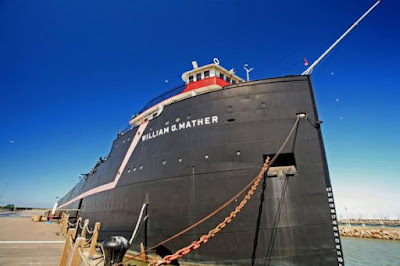
THE FAMOUS STEAMSHIP
WILLIAM G. MATHER
G'day folks,
This steamer is known as "The ship that built Cleveland."In a radio broadcast on December 29, 1940, President Franklin D. Roosevelt called for the United States to arm and support the Allies in their resistance to a rapidly expanding Nazi Germany. Roosevelt asked that the United States become an “arsenal of democracy” and apply its industry towards supporting the war effort. Much of that effort was undertaken by the Steamship William G. Mather.
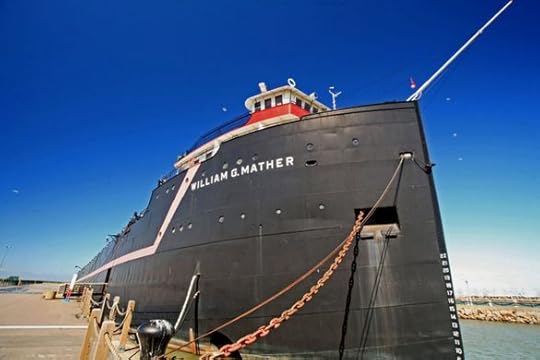

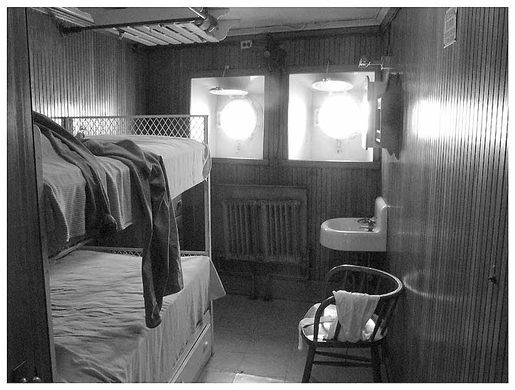
The William G. Mather, built and launched in 1925, was the flagship of the Cleveland Cliffs Iron Company. The ship runs 618 feet long, with a cargo capacity of 14,000 tons. In operation for 55 years, it carried millions of tons of iron ore to the steel mills of Cleveland and myriad other goods across the Great Lakes.
In 1941, following Roosevelt’s exhortation, the Mather took on a new role as an icebreaker. It led a 13-freighter convoy through the frozen Great Lakes, not only delivering a massive quantity of iron to steel mills in Duluth, but also setting a speed record. This feat was chronicled in an issue of Life magazine and became a significant part of the ship’s mythology.
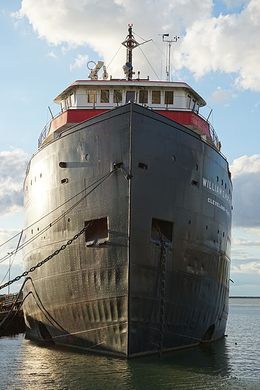
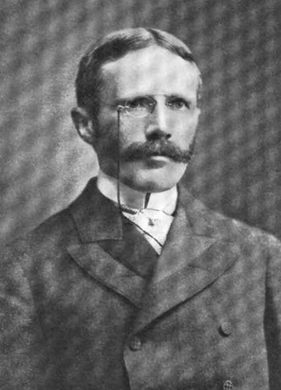
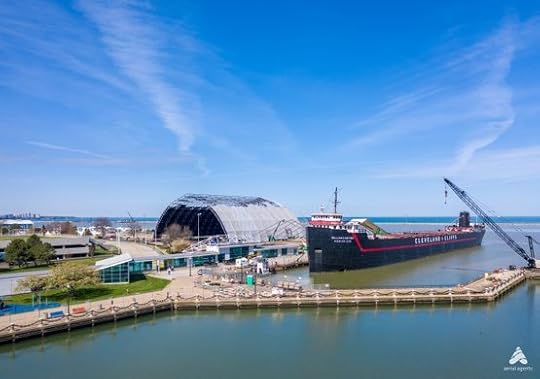
The record-setting trip to Minnesota would not be the Mather’s only first. It was one of the earliest ships in this region to be outfitted with radar and the first to have a fully automated boiler system. Indeed, it went through such a sequence of restorations that it seems its owners were determined not to let it go, whatever the cost. At the end of its career, it would be the very last freighter in the Cleveland Cliffs fleet—they had already sold off or retired all of the rest.
The Mather faithfully traversed the Great Lakes until 1980. It opened as a museum in 1990 and is now a popular attraction in the Cleveland area. Visitors can walk the lengthy deck, explore the cavernous cargo holds, and poke around the towering engine room. The Mather is now docked by the Great Lakes Science Center, which acquired the great ship in 2006.
5 November 2022 - FROZEN CLEVELAND LIGHTHOUSE

FROZEN CLEVELAND
LIGHTHOUSE
G'day folks,
Welcome to an unoccupied lighthouse encased in layers of ice from the waters of Lake Erie.There’s a lighthouse in Cleveland, Ohio, that is placed so close to Lake Erie, one of the Great Lakes of the Midwest, that a wonderful weather phenomenon takes place.
It started during the winter of 2010, when the lighthouse was sprayed so many times with water from the lake that it froze into a giant sculpture designed and built by Mother Nature. The ice has built up layer by layer, completely encasing the lighthouse in ice and drawing visitors from all over the state.
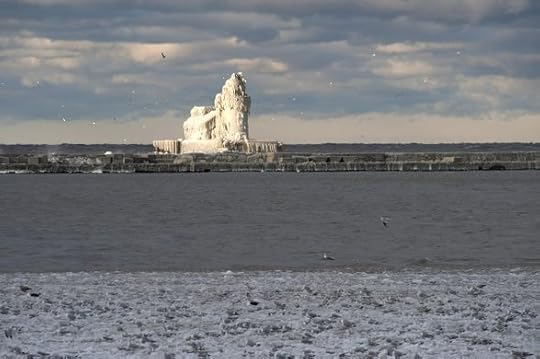
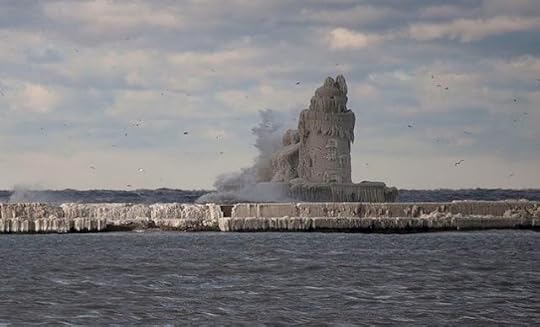
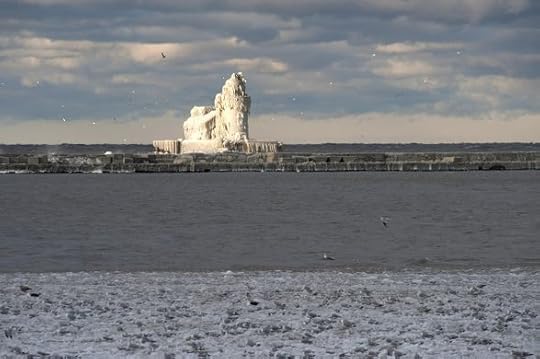
“Days of unrelenting gale force winds which began on December 13 churned up white caps on Lake Erie,” a local broadcasting station explained in 2010. “Those monster waves crashed across the Cleveland Harbor breakwall and West Pier lighthouse.”
The ice has brought more attention to the lighthouse than it has seen in decades. Built in 1911, it has been unoccupied since 1965 when it was automated. The original Fresnel lens was donated to the Great Lakes Science Center in Cleveland, which is within sight of the lighthouse, right across the harbor.
Curiously, over the 105 years, the lighthouse has developed a slight tilt to the right, and the tilt is visible from the shore if you look carefully.

August 14, 2022
10 November 2022 - SIERRA LEONE'S NATIONAL RAILWAY MUSEUM

SIERRA LEONE'S
NATIONAL RAILWAY MUSEUM
G'day folks,
After Sierra Leone's railways shut down in 1974, a collection of engines and other artifacts spent decades hidden away in this old workshop—now a museum.The Sierra Leone railroad system was built in 1897, with one line to Daru in the eastern part of the country (and a small branch to Makeni the largest town in the north).
The railroad system operated until 1974, then shut down due to a combination of increased car traffic and country policy. Since that year, some of the locomotives were bought and shipped to Wales, the others were kept in the capital city of Freetown. They were stored in the former train workshop, with the intention to convert it into a museum.


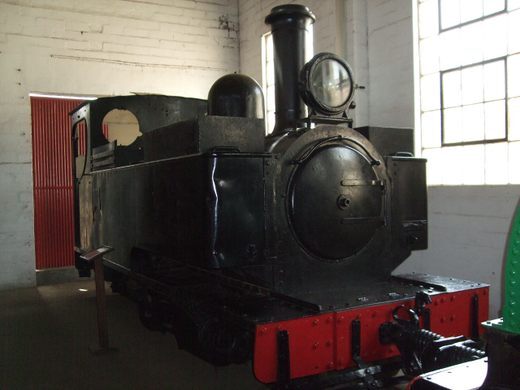

The collection survived despite years of neglected upkeep, and the workshop turning into a shelter during Sierra Leone’s civil war. From 1992 to 2002, some 50,000 people lost their lives and hundreds of thousands more lost their homes. Many of those displaced people found the former workshop complex and turned it into a temporary shelter.
After the war’s end, the collection of railway engines was located and restoration work began. A team set about cleaning and repairing the engines as well as the workshop space. The museum officially opened in 2005, and has continued to grow since then. The museum shows maps of the railroads, their history, and photos of the stations. One of the unusual items in the museum’s collection is a couch specially made for Queen Elizabeth II to use while traveling through the country in 1961 (she never wound up using it), located on a tank locomotive built in 1915.
15 November 2022 - THE FAMOUS PERA PALACE HOTEL - ISTANBUL
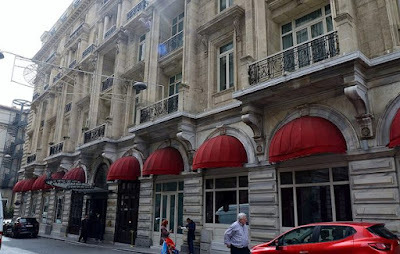
THE FAMOUS PERA
PALACE HOTEL
- ISTANBUL -
G'day folks,
This historic hotel preserves many treasures from its heyday hosting passengers on the Orient Express.The luxurious Pera Palace Hotel, the oldest European hotel in Istanbul, was built in the 19th century to host passengers traveling east on the famous Orient Express. Its rooms have housed such prominent figures as Ernest Hemingway, King Edward VII of England, Alfred Hitchcock, and Jackie Kennedy. Today, some rooms are preserved to look just as they did when they hosted these prestigious guests.
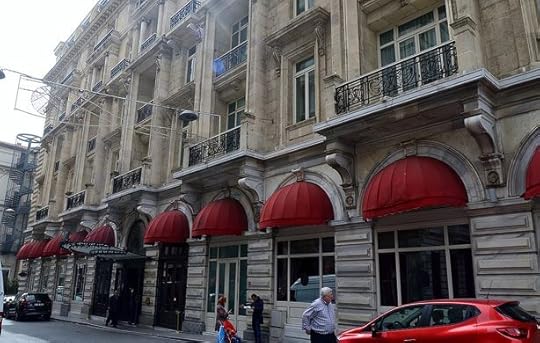
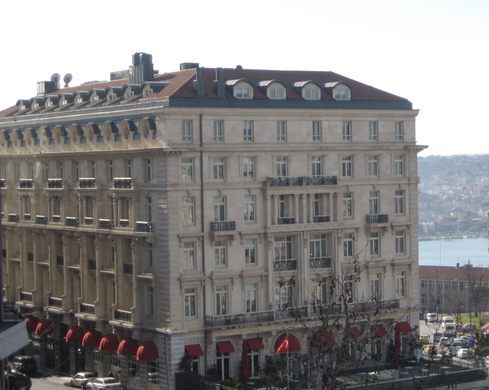
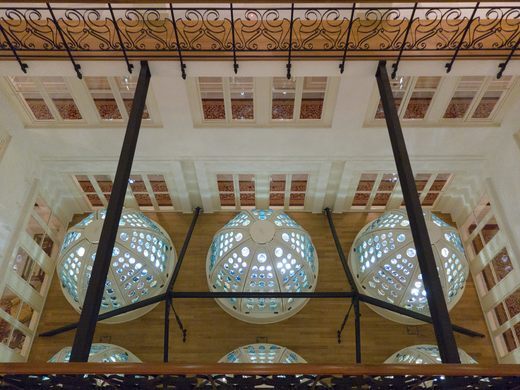
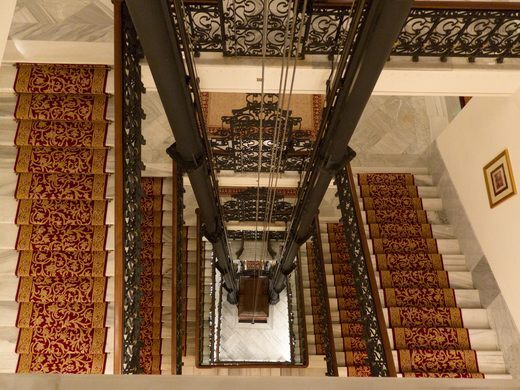
One very interesting example is Room 101, which was stayed in by Mustafa Kemal Atatürk, the founder and first president of the Republic of Turkey. The room preserves the old furniture and decoration from Atatürk’s stay in 1917, and some of the president’s personal belongings. One of these is an old clock whose hands stopped ticking exactly at the moment of Atatürk’s death.
Room 411 is better known as the Agatha Christie room, and it is one of the most requested rooms at the hotel. The Queen of Crime stayed in this particular room several times between the years 1926 and 1932, reportedly while writing one of her most famous novels, Murder on the Orient Express. Several urban legends tell that during the 11 days when the writer went missing, she was here at the Pera Palace Hotel.



Located in Istanbul’s “Little Europe” district, Beyoğlu, the hotel’s exterior combines elements of art nouveau with oriental and neoclassical style. For many years, guests arriving in the city via the luxury passenger train would stay at this hotel, which is why both it and the train have the same symbol, a crest of golden lions. The historic elevator can still be seen inside the hotel, with its curious structure of wood and wrought iron and the unmistakable arrow that indicated the floors. In the grand lobby, you can admire other gems of yesteryear, like the old wooden telephone with two bells and an earphone, and the palanquin that used to transport people from the Sirkeci railway station, the eastern terminus of the Orient Express.
August 11, 2022
9 November 2022 - LARGEST UNDERGROUND LAKE IN EUROPE
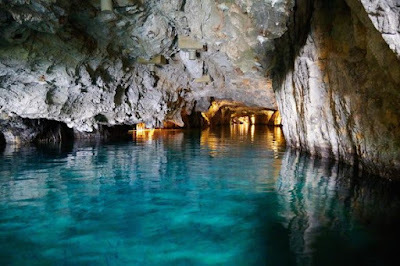
LARGEST UNDERGROUND
LAKE IN EUROPE
G'day folks,
Welcome to the largest underground lake in Europe.
In the middle of the Valais valley, just below some beautiful vineyards, lies the inconspicuous entrance to one of Europe’s most impressive underground sites: Lac Souterrain de Saint-Léonard. It is the largest subterranean lake in Europe, with a length of 300 meters and a width of 20 meters.
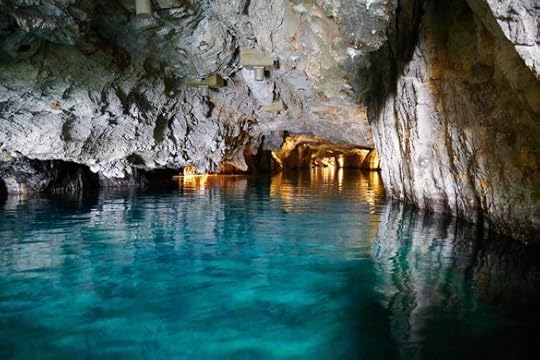

After entering and descending the 50 steps you find yourself on a jetty, with waters of the continent’s largest natural underground lake stretches out in front of you. Its total area is approximately 6,000 square meters, and the water stays at an average temperature of 11 degrees Celsius (52 degrees Fahrenheit). The water is so very still that every drop hitting the surface can be heard distinctly in the cave.
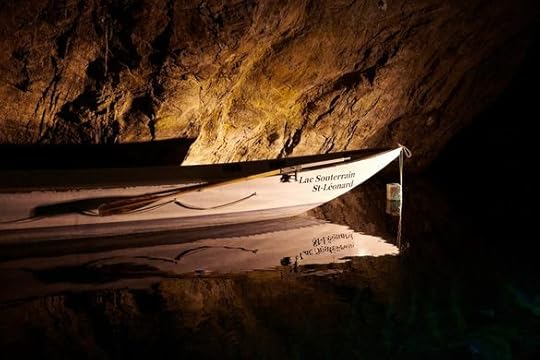


The underground lake is located in a bed of Triassic gypsum. It formed over millions of years as the rock was slowly dissolved by groundwater. On the guided boat tour bats or the settled trout can be observed, and so can the bare gypsum, slate, and marble walls touching the edge of the water.



